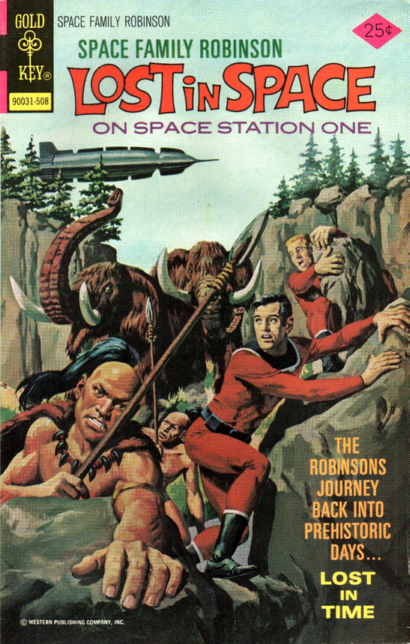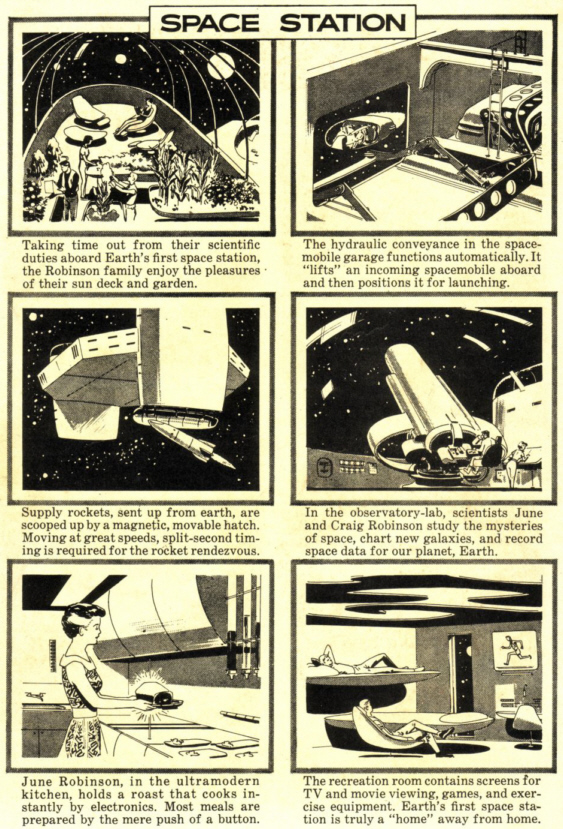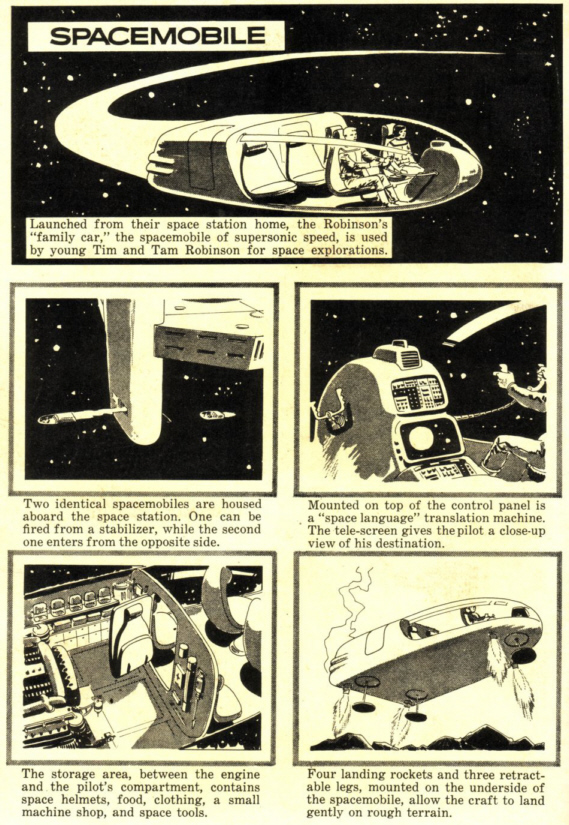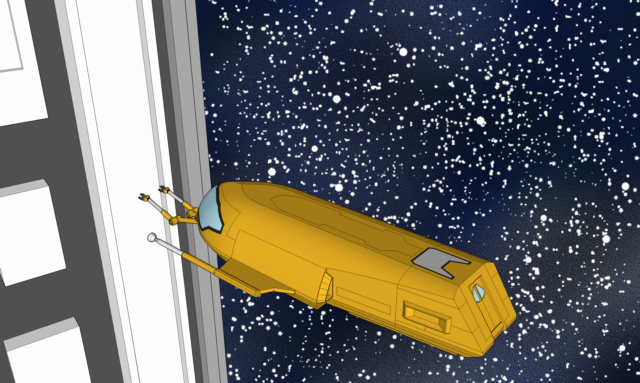|
This month, I decided to delve back into the comics of my childhood, again.
Growing up, I didn't read Marvel and DC much, even during the period when I was seized with Batmania. Of course, when the Batman TV series came out, I couldn't read at all. Most of the comics I read, until the 4th or 5th grade, were Gold Key comics. Turok: Son of Stone, was always a favorite and Magnus: Robot Fighter, as well. These books set a standard for me, probably made me a bit of an art snob.
Gold Key seemed to have spotty distribution in my area, for whatever reason, because I missed out on quite a few of their titles and whole blocks of issues, for the ones I could find. So, it was after I had begun collecting comics, when I stumbled upon their Lost in Space/Space Family Robinson book.
I was a Lost in Space fan from way back, and I couldn't believe there was a comic of that title that I didn't know about. This was in the mid-70s, so the TV show was only seen in syndication by that point. I was interested, immediately, but confused, as I started reading the comic, these weren't the Robinson's I was expecting.
A family of 4, Craig and June Robinson, their kids, Tim and Tam, living on a large space station, wandering the stars trying to find a way home.
One of the things that always made Gold Key comics stand out was their painted covers. At a time when most comics featured garishly colored line drawings, this made them different. It was the cover that grabbed me.

It was years before I finally got to read the first few issues of the series and very recently, that I actually read a bit about the history of the series. Apparently, the idea for a "Swiss Family Robinson in space" was first suggested by Carl Barks -yes, that Carl Barks- but nothing ever came of it.
The Gold Key series was created by writer Del Connell and artist Dan Spiegle and it wasn't until the second issue of the series that the family actually became lost. Funnily enough, in a story titled "Lost in Space". The comic wouldn't sport the title "Lost in Space" until issue #15, though they never attempted to adapt the TV series.

A cosmic storm drives their ship, Space Station One, far from Earth and unable to find their way home. The stories tend to conform to the monster-of-the-week format, with a few forays into exploring alien cultures. A large number of the stories could have been inspired by Heinlein's juvenile books, as the kids seem to drive a lot of the stories.
One of the things that always struck me as interesting about the series was the design of the Space Station itself. Considering that the book first appeared in 1962, it's a very advanced design. At this time, a lot of sci-fi art was still influenced by the needle-pointed rocket look, flying saucers, or by the actual designs coming from the infant space program.

As big as the station is, they can still land it in some cases, but they use little vehicles called "spacemobiles" as shuttles. The design for these craft looks more like something from a cartoon series and I never found them as good as the station itself.

This is one of those cases where the characters don't really need any work, but I thought I could do something with the hardware.
It started when I was playing around in SketchUp and I thought I'd do a ship in the style of Space Station one. As I worked on it, I decided to work it up for the column and designed a couple of auxiliary vehicles along the lines of the spacemobile.

It's more angular that Spiegle's design, but I think it's a nice update.
The spacemobile was another matter. I'm sure there will come a day when we have to technology to fly around in little space vehicles that have the entire passenger compartment enclosed in a large glass bubble, which looks cool, but is impractical in space. My design is a bit longer, and uses a rear airlock, rather than opening the glass bubble.

In addition to the spacemobile, I always liked the idea of a work vehicle, so I created a version with Waldoes for working in space. It uses the same body as the spacemobile, but is stripped down for one or two people for extended work details in zero gravity.

I was thinking about it last night and I had an idea how to rework the series. The whole "Cosmic storm" idea doesn't explain the ability of their ship, which is described as having a "magnetic drive" and is said to be relatively slow and inefficient, could visit a new star system every issue, without the occupants aging significantly. For that, you need a shortcut around the speed of light.
What if, instead of a cosmic storm, they triggered or entered a wormhole, in a ship not equipped to navigate wormholes. They're dragged through the wormhole and cast adrift. The wormhole comes out in a nexus of the things, a crossroads, where they naturally encounter other travelers, and as time goes on, learn to traverse wormholes, looking for the way back to familiar stars. This gives them a way to cross interstellar space and visit alien worlds and have adventures, etc. As their knowledge grows, their chances of getting home improve. It's always nice to make it look like your characters are making progress. It helps when you have to hand them a setback.
www.heroblog.com
Copyright © 2010 Joe Singleton
|
|








